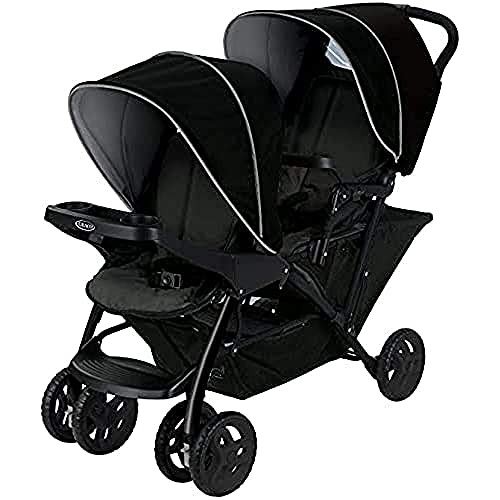Understanding Pushchairs and Prams: A Comprehensive Guide
When it concerns baby movement, the terms "pushchair" and "pram" are typically utilized interchangeably. However, they represent unique kinds of baby carriers, each crafted for particular stages of a kid's advancement and varied adult needs. This post digs into the crucial distinctions in between pushchairs and prams, their features, types, and considerations for new moms and dads.
What is a Pushchair?
A pushchair, frequently referred to as a stroller in some areas, is created for kids who can sit up separately. Typically, pushchairs are contemporary, lightweight, and have a seat that can be reclined for added convenience. They might also feature a five-point harness to guarantee the kid's safety while on the go.
Secret Features of Pushchairs
- Lightweight Design: Most pushchairs are made from lighter products, making them easy to steer and carry.
- Adjustable Seats: Many designs use recline choices, dealing with resting or active positions.
- Canopy: Most pushchairs come equipped with a sunshade or canopy to secure the kid from sun exposure.
- Storage Space: They normally include a lower storage basket, best for holding diaper bags or shopping.
Common Types of Pushchairs
- Requirement Pushchairs: Traditional choices ideal for kids who can sit separately.
- Umbrella Strollers: Lightweight, compact, and simple to fold; ideal for taking a trip.
- All-Terrain Strollers: Built with larger wheels for off-road capabilities and smooth trips on diverse surface areas.
- Travel Systems: Combines a stroller and an infant car seat, permitting moms and dads to move their child perfectly.
What is a Pram?
A pram, brief for "perambulator," is mostly created for babies, normally from birth up until around six months. Prams are structured with a flat lying position that supports a newborn's anatomy, guaranteeing they are nestled appropriately.
Secret Features of Prams
- Flat Bed Design: Prams have a totally flat bed, which is important for young babies who need to lie flat for comfort and health.
- Stylish Aesthetics: Many prams boast vintage or classic designs, frequently seen with glamorous fabrics and appealing surfaces.
- Suspension System: Quality prams frequently include a suspension system to offer a smoother trip over rough terrain.
- Extended Canopy: Extended sun security and rain covers prevail.
Common Types of Prams
- Timeless Prams: Featuring a traditional design, these are often styled to evoke nostalgia.
- Convertible Prams: These can rapidly change from a pram to a pushchair and typically grow with the child.
- Lightweight Prams: More compact than traditional prams, making them easier to transfer.
Distinctions Between Pushchairs and Prams
| Function | Pushchair | Pram |
|---|---|---|
| Use Case | For kids who can sit up | For newborns and babies |
| Design | Upright seat with reclining alternative | Flat bed for lying down |
| Weight | Generally lighter | Heavier due to sturdy construction |
| Density | Folds quickly and compactly | Might be bulkier, depending on design |
| Age Range | 6 months to 4 years or older | Birth to around 6 months |
| Rate Range | More inexpensive options available | Typically more expensive due to products and design |
Choosing Between a Pushchair and Pram
When choosing between a pushchair and a pram, a number of factors necessitate factor to consider:
- Age of the Child: Newborns need a pram; older babies and young children will be more comfy in a pushchair.
- Way of life Needs: Parents who travel typically might choose lightweight pushchairs, while those trying to find convenience in design may favor prams.
- Spending plan: Prams can range from moderately to costly; reliable pushchairs can cater to budget-conscious buyers.
- Storage Space: Consider how quickly the picked design can fit in your vehicle trunk or home storage.
FAQs
Q1: Can I use a pushchair for a newborn baby?
While certain pushchairs are created with reclining features that might accommodate infants, it is generally recommended to use a pram or specially created baby safety seat for newborns.
Q2: Are travel systems worth the financial investment?
Travel systems can offer benefit by combining a car seat and a stroller. They permit smooth shift from cars and truck to stroller, which lots of moms and dads discover vital.
Q3: How do I preserve my pushchair or pram?
Frequently clean the material, look for mechanical issues, and lube the wheels. Make certain to follow specific care guidelines supplied by the manufacturer.
Q4: What is the weight limit for pushchairs and prams?
Weight limits differ by design: usually, pushchairs accommodate as much as 50 lbs, while prams fit babies approximately 30 pounds. Always refer to Cheap Stroller Pushchair .
Q5: Is it vital to have a rain cover for my pushchair or pram?
Yes, a rain cover can protect your child from rain and wind, preserving comfort while preventing moist clothes.
In summary, pushchairs and prams serve essential but unique functions in the mobility landscape for parents and caregivers. Selecting the ideal design depends upon the kid's age, lifestyle needs, and family preferences. By understanding the attributes, benefits, and differences in between pushchairs and prams, moms and dads can make informed decisions that make sure convenience and security for their child. Whether walking through the park or navigating busy streets, the perfect mobility solution is out there waiting.

